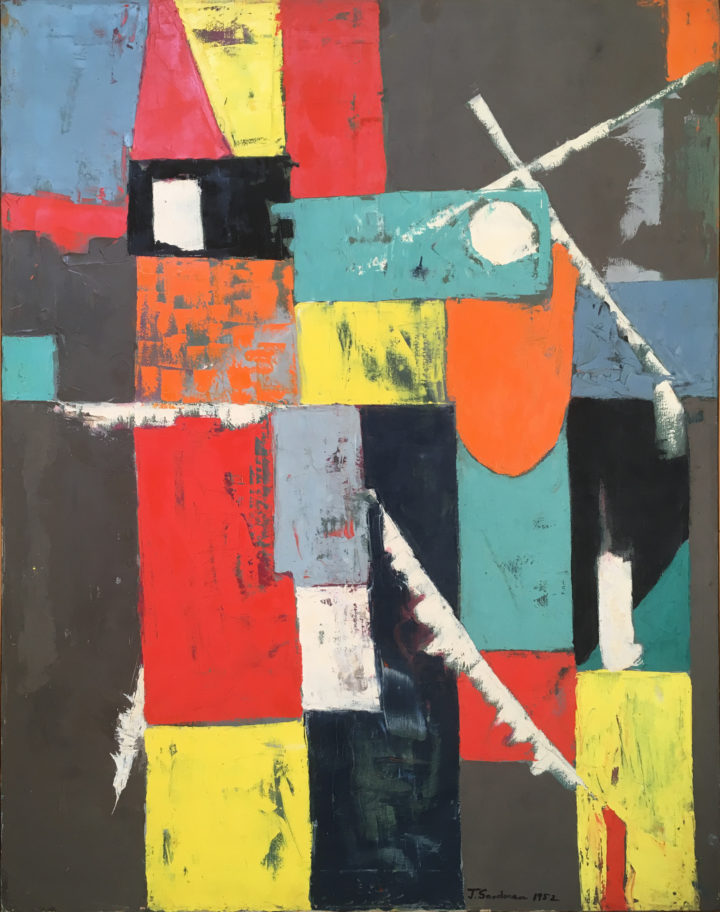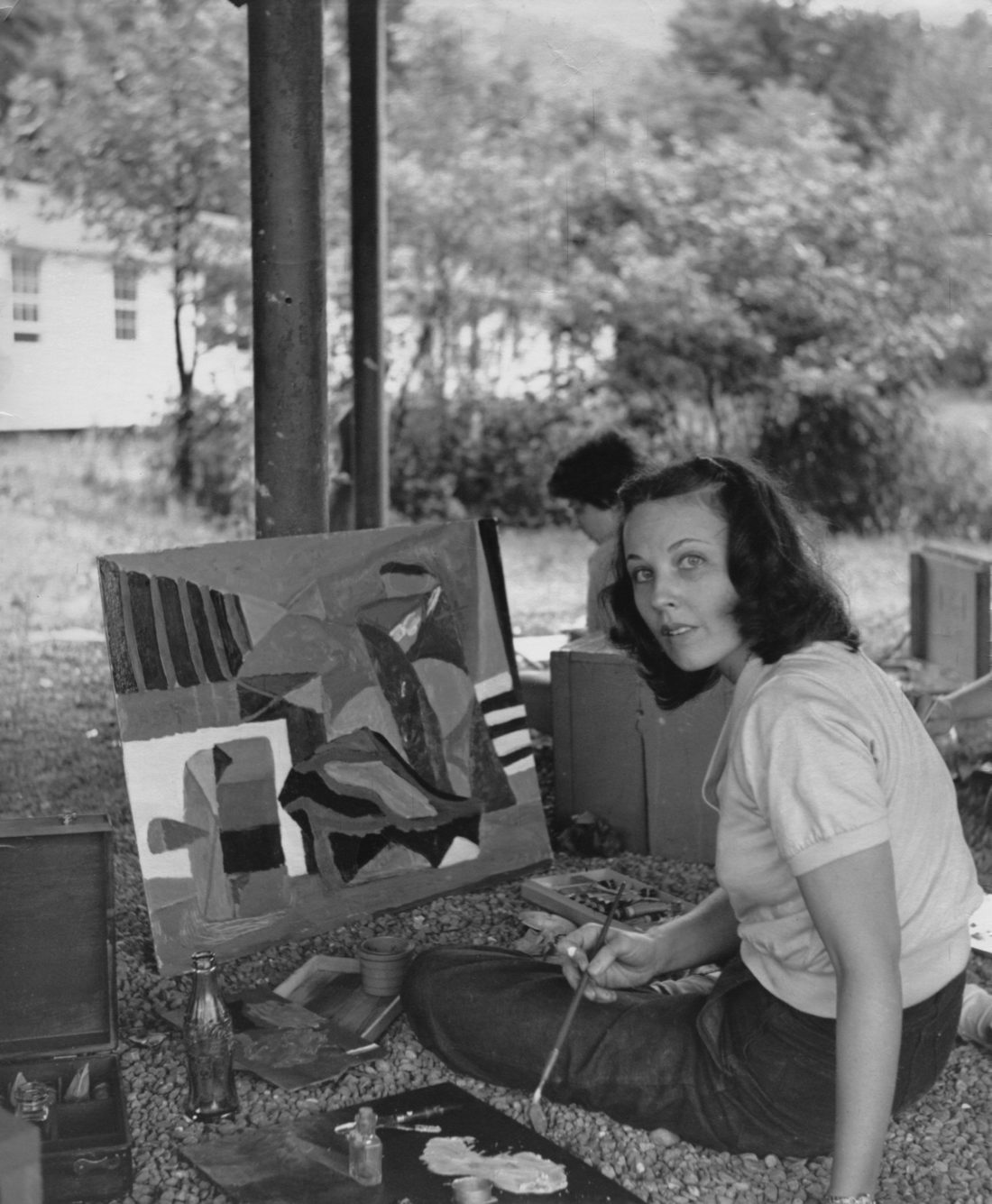Although it’s the men associated with Black Mountain College — such as teaching artists Josef Albers, Buckminster Fuller and Charles Olsen — who have historically received the most acclaim, the women of that institution were also innovators, change makers and important players in the art world. In fact, “During World War II, when most of the men were off fighting, the women ran the college, which is a pretty interesting part of the story,” says Alice Sebrell, program director at Black Mountain College Museum + Arts Center.
Sebrell and outreach manager Kate Averett curated the new exhibition, Question Everything! The Women of Black Mountain College, set to open Friday, Jan. 24. A wide array of accompanying programs, from music and spoken word to workshops and film screenings, runs through April 25.
“We knew we wanted to do a women’s show, but in a targeted way,” explains Averett. In oral histories, she found that “so many [female] students talked about having this intellectual freedom there that they didn’t find in traditional universities and didn’t find in their homes. … Questioning themselves as individuals, as artists, as students, as educators.”
Instead of focusing on narratives of oppression (such as why women’s art has historically been underrepresented), the show sheds light on the contributions and experiences of female faculty and students at the experimental college, which operated 1933-57. “We had conversations about works in our collection that had not been showcased recently,” says Averett. Other women featured in the exhibition came to light through research.
In one instance, a door from the college’s weaving studio, painted by lesser-known alumna Faith Murray Britton when she was a student, turned up with Britton’s family. “She came back and got the door when Black Mountain College closed and had it in her home,” says Averett. “It was one of these things like, ‘Maybe that exists, somewhere.’ Being able to find it was a nice surprise.”
Graphic designer Ati Gropius Johansen (the daughter of German architect and Bauhaus school founder Walter Gropius) captured the culture of the BMC through illustrated letters. “They’re funny; they’re pointed in a way, but with humor,” says Sebrell.
She continues, “That’s something we’ve always done: Don’t just pay attention to the famous but dig deeper. … We’ve always tried to bring those more hidden stories to light.”
Unearthing the details of the women who taught and learned on the Black Mountain campus more than half a century ago is further complicated by name changes due to marriage. But the families of the artists continue to donate new materials to institutions such as the Western Regional Archives. Sebrell notes Nell Goldsmith’s color photos among recent discoveries. “For so many years, Black Mountain College has been in black and white in my head,” she says. “But, more and more, these color images have been surfacing — photographs and a couple of films.”
For Averett, “What has been unexpected is finding all these candid accounts from women [about topics such as] going [to the college] and finding their queer identities. … Things you didn’t think you’d find in women writing about the 1940s.” She adds, “A few women had similar stories about coming to Black Mountain College with prom dresses, thinking they would be coming out to society. Then they’d throw them away and go get a pair of Levi’s, which is so funny and great.”

Institutions lending art to Question Everything! include the Crystal Bridges Museum of American Art in Bentonville, Ark., and the Reynolda House Museum of American Art in Winston-Salem, as well as the family of sculptor and BMC alumna Ruth Asawa. BMCM+AC’s own collection includes long-held works of importance as well as new acquisitions, such as Jo Sandman’s colorful, geometric piece “Untitled,” from 1952; and paintings by Pat Passlof.
The latter was featured in BMCM+AC’s 2012 exhibition, Pat Passlof: Selections 1948-2011, which opened just a couple of months after the artist’s death. Despite the art world being largely male-led, Passlof “was in New York, she was painting, she was part of the scene,” says Sebrell. Passlof organized junior club meetings for younger artists; the group quickly became so successful it was shut down by leading artists in the field who likely felt threatened.
So many of the BMC women “went on to have really creative lives,” says Averett. “I do think there was a streak of radical experimentation, whether [they] went on to become artists or move to California and start a homestead.”
Sebrell points to poet, potter and writer M.C. Richards “as somebody who still hasn’t gotten her due. … She’s so brilliant and complicated, it’s hard to contain her.” And Suzi Gablik, who came to BMC to study painting with Robert Motherwell, also took classes with Olsen and realized writing was her path. Her books of art criticism include How Modernism Failed.
The school was more than a degree program; it was a way of life, Averett notes. The attendees were hippies before hippies were a thing. They discussed identity politics and sustainability.
“Vera Baker Williams talks about how, at Black Mountain, if you had an idea and you could figure out how to make it happen, you could do it,” says Sebrell. For example, Williams wanted to paint the dining hall, so she made paint from buttermilk. “I think that was problematic,” Sebrell adds with a laugh. “But you didn’t have to ask permission. That taste of freedom and empowerment is something I think many [women] took with them, post-Black Mountain.”
WHAT: Question Everything! The Women of Black Mountain College
WHERE: Black Mountain College Museum + Arts Center, 120 College St., blackmountaincollege.org
WHEN: Opening reception Friday, Jan. 24, 5:30-8 p.m. On view through Saturday, April 25




Before you comment
The comments section is here to provide a platform for civil dialogue on the issues we face together as a local community. Xpress is committed to offering this platform for all voices, but when the tone of the discussion gets nasty or strays off topic, we believe many people choose not to participate. Xpress editors are determined to moderate comments to ensure a constructive interchange is maintained. All comments judged not to be in keeping with the spirit of civil discourse will be removed and repeat violators will be banned. See here for our terms of service. Thank you for being part of this effort to promote respectful discussion.